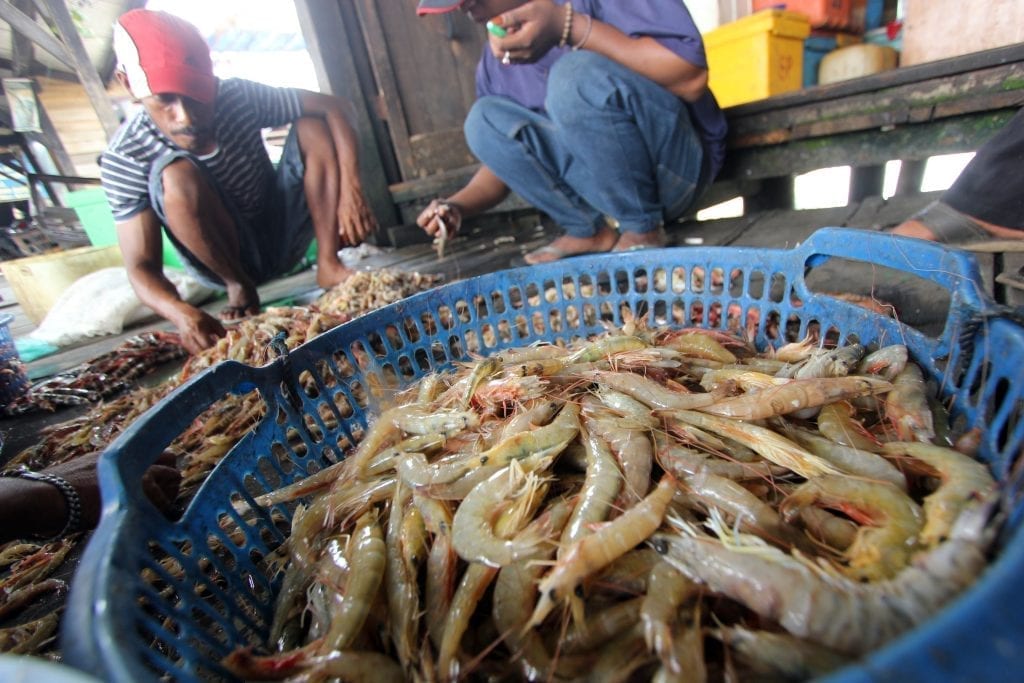
Heavy rain, which has caused floods in several provinces, as well as ongoing disease issues, limited the growth of Thai shrimp production in the first half of this year, Thai Union Group’s shrimp unit managing director, Preerasak Boonmechote, told us during a recent visit to the firm’s processing plant near Bangkok, before the Thaifex trade show in Bangkok.
Thai shrimp production is expected to grow 5% overall this year, lower than earlier expectations of 10-15% output growth, Boonmechote said, pointing to the fact that heavy rain had limited the country’s production growth plan.
In 2016, Thailand’s production increased around 50,000 metric tons to 300,000t, Robins McIntosh, senior vice president of Thai agribusiness and food processing giant Charoen Pokphand Foods, said in January, at the Global Seafood Market Conference in San Francisco, California. According to Thai Union’s estimates, Thai production in 2016 totaled slightly less, about 250,000t.
Meanwhile, Thai shrimp prices, which are on the rise again, are expected to either remain stable or grow 5% y-o-y in 2017, according to Boonmechote.
Output growth
Thai Union plans to increase its shrimp production 5% this year, up from 65,000t in 2016, Boonmechote said.
Thai Union owns three shrimp processing plants in Thailand, which currently operate at 60-70% of their capacity, said Boonmechote. The firm, which is Thailand’s largest shrimp producer, plans to expand sales to the retail sector, particularly in Thailand and Korea, as well as in Australia, China and Middle East.
Another large Thai shrimp producer, Marine Gold Products, plans to increase its shrimp production to 25,000t in 2017, up from 20,000t in 2016.
Marine Gold has also introduced some new value-added products (see the photo of the firm’s new Thai green curry ready-to-eat product), mainly for the local market, as well as for China, Taiwan, Korea and Japan.Heavy rain in Thailand has caused a decrease of production compared with 2016, but the firm aims to recover its output in the second half of the year, Panuwat Wat Tanakijrungrueang, a marketing executive with the firm, told us during the Thaifex trade show.
Several other large Thai shrimp processors told us they are looking to up production, as well as diversify to other products, during Thaifex.
An executive with May Ao Group said the firm plans to increase its output around 5-10% y-o-y in 2017, from 12,000t in 2016.
Thai Royal Frozen Food, which produced about 20,000t of shrimp last year, also plan to increase its production, with a 10-20% rise planned for 2017, an executive with the company told us, during Thaifex.
Another processor, Lee Heng Seafood, also aims to increase its shrimp output in 2017 from almost 3,600t last year, having built a second processing plant in the Phang-Nga province, Thailand, the company said, during the show.
Other processors are looking at more diversification.
Thai frozen food manufacturer Surapon Foods is currently building a new frozen sushi and chicken processing plant, as it plans to focus more on value-added seafood and chicken products, Auhtaphon Ratana Arporn, assistant managing director at the firm’s trading arm Surapon Finest.
The firm is investing THB 200 million ($5.8m) in 2017 to build the new plant and renovating its other plants.
The firm has recently reorganized its structure and introduced a new value-added product line. It also launched a new logistic firm, named Mobile Logistics, which distributes frozen products across the Thai market, Ratana said.
Meanwhile, PTN Group has started the sale of live Osaki oysters on the Thai market.
The firm was promoting the new Japanese farmed product at the Thaifex trade show, targeting both retail and Horeca sector. It also sells breaded oysters and salmon nuggets.

